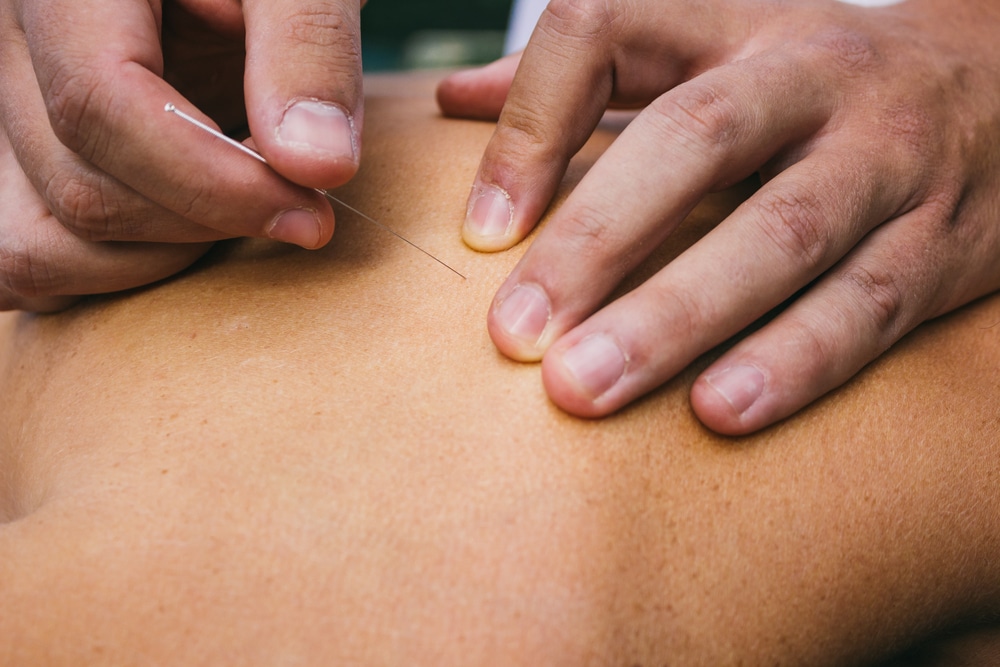Why You Should Consider Dry Needling

By: Nick Hopson, PT, DPT, Cert. DN
Dry needling – the words alone sound scary, right? Dry needling is a treatment where solid filament needles are placed into tight bands of muscle fibers known as trigger points to relieve pain. Physical therapists focus the technique on the neuromusculoskeletal system to target muscle, connective tissue (such as tendon and ligaments), joints, and certain nerve conditions. It is performed in conjunction with other therapies, such as stretching and strengthening.
Dry needling bases its needle placements on modern research for origins of pain. Traditional dry needling was primarily used to disrupt trigger points (taut bands in muscle), but it can also be used to decrease muscle tension, address scar tissue adhesions, and inhibit improper nerve conduction for the management of pain and movement impairments. It is called dry needling because it does not involve a wet substance (medication) like injections from a hypodermic needle.
Some people get dry needling confused with acupuncture. Although acupuncture and dry needling are similar in using the same type of solid sterile needles, the philosophy and rationale behind their uses are very different. Dry needling is based on modern anatomy and physiology, whereas acupuncture is a technique from traditional Chinese medicine which has been in use for at least 2,000 years.
Acupuncture’s underlying treatment philosophy is based on the concept of balance and maintaining free flow of energy within the body. Acupuncturists believe that when the flow of chi (energy) is disrupted, then illness and disease result. There are 12 primary meridians (channels) that correspond with organs in the body, including the heart, lungs, stomach, etc. To correct these disruptions, needles are inserted along meridians to restore balance within the system.
Dry needling can be used in conjunction with traditional physical therapy on a number of musculoskeletal issues which include:
• Neck and back pain
• Disc pathology (pinched nerve, bulging disc, etc.)
• Migraine/ tension headaches
• Athletic and sports injuries
• Post-surgical pain
• Acute and chronic tendonitis
• Chronic pain problems
• TMJ
If you want to see what a dry needling procedure is like, click here to watch a news feature on dry needling at Sheltering Arms.
Dry needling services at Sheltering Arms are available at the following locations: Chester, Hanover, Laburnum, Reynolds, and Hull St. To see if dry needling is right for you, click here to request an appointment.